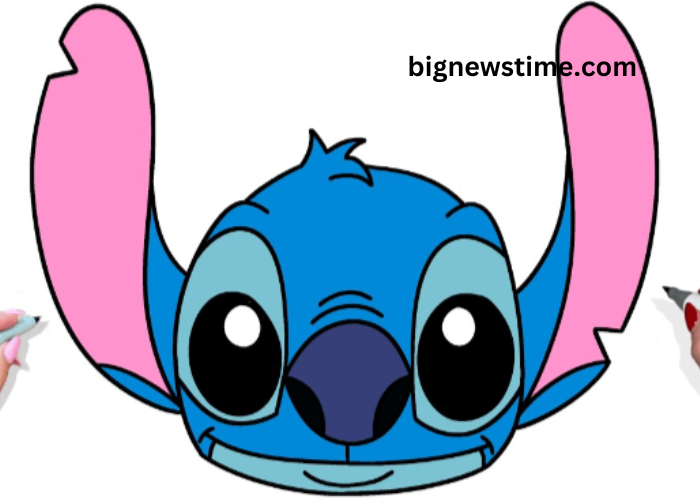Lifestyle
drawing:7lsw2zlcm4y= stitch
Published
3 months agoon
By
Admin
In the world of creative expression, drawing:7lsw2zlcm4y= stitch and stitching might seem like two disparate crafts, but they merge beautifully to create an intricate tapestry of artistic potential. Combining these two forms of art opens up a realm of possibilities where texture, depth, and dimension are explored in ways traditional drawing alone cannot achieve. The intersection of drawing and stitchwork offers a unique perspective on visual storytelling, enriching both mediums with newfound depth.
The Art of drawing:7lsw2zlcm4y= stitch
Drawing has long been a fundamental form of artistic expression, utilizing various tools such as pencils, pens, and charcoal to create images on paper. It captures form, emotion, and narrative with striking precision. On the other hand, stitching is often associated with textiles and involves creating patterns or images through the manipulation of thread and fabric. This technique traditionally falls under the umbrella of craft and design but has recently found its way into contemporary art practice.
When these two art forms converge, the result is a fascinating hybrid that adds texture and physicality to the drawn image. The process starts with a basic drawing on fabric or paper. Artists often begin with simple sketches or detailed illustrations, laying the groundwork for their stitched enhancements. From this foundation, they use embroidery techniques to bring their drawings to life, adding layers of color, texture, and dimension.
Techniques and Methods
Several techniques can be employed to fuse drawing and stitching, each offering unique visual outcomes:
- Embroidered Lines and Details: In this method, artists use embroidery to trace over pencil or ink lines in their drawing:7lsw2zlcm4y= stitch. This can highlight certain elements or add intricate detail that stands out against the background. The tactile nature of thread adds a new layer of complexity, transforming flat lines into textured, three-dimensional forms.
- Stitched Textures: By integrating different stitching techniques—such as satin stitch, French knots, or cross-stitch—artists can create a range of textures that complement or contrast with their drawings. This approach can be used to emphasize certain areas or create a dynamic interplay between drawn and stitched elements.
- Mixed Media Surfaces: Combining drawing with fabric or canvas, artists often experiment with various surfaces to achieve different effects. Drawing on fabric, for instance, provides a different texture and absorption quality compared to traditional paper, influencing how the stitches appear and interact with the drawn lines.
- Layering Techniques: Artists sometimes layer stitched elements over or under drawn components, adding a sense of depth and dimension to their work. This technique can create intriguing visual effects, where parts of the drawing are partially obscured or enhanced by the stitching.
Applications and Artistic Impact
The fusion of drawing and stitching has found a growing place in contemporary art and craft. It allows artists to explore themes of fragility, intimacy, and the intersection of the handmade with the drawn. For instance, artists might use stitching to depict delicate subjects like human emotions or natural elements, emphasizing the intricacy and care involved in both drawing:7lsw2zlcm4y= stitch processes.
Additionally, this combination offers a powerful commentary on the nature of art-making. While drawing often emphasizes precision and control, stitching introduces an element of unpredictability and texture that can challenge traditional notions of perfection. This juxtaposition can lead to compelling works that reflect the complexities of human experience.
Conclusion
The artful combination of drawing:7lsw2zlcm4y= stitch represents a rich and evolving field within contemporary art. By blending the precision of drawing with the tactile quality of stitching, artists create multi-dimensional works that offer new ways of seeing and experiencing art. This fusion not only enhances the visual and tactile appeal of the artwork but also invites viewers to engage with the piece on a deeper, more sensory level. As artists continue to explore and innovate within this space, the potential for new and exciting artistic expressions seems boundless, making the intersection of drawing and stitching a vibrant and promising area of creative exploration.
You may like

100 Dynamic Duos: Legendary Pairings That Transcend Time
ARK: Survival Evolved Game Icons and Banners

cute:i1cdycptg50= drawings

Understanding New York Sports Club Membership: What It Offers and What Affects the Cost

Safety Tips for Compressed Air Dryers

drawing:23vyczbybxu= billie eilish

drawing:056aoyw74ce= rick and morty

drawing:4oyh4y0aqsa= santa claus

24 Hour Fitness Cost: How Much Is 24 Hour Fitness Membership?

drawing:7barsug8u0w= spider man

How can online food delivery sales increase and attract the maximum number of customers in 2023?

MEP BIM: Revolutionizing Building Infrastructure Design

Revolutionizing Industries with ChatGPT

Resolving the Israeli-Palestinian Conflict: A Comprehensive Analysis

Skillful Passion: Wisconsin’s Dominant Volleyball Team

Virtual Reality Rental: A Futuristic Experience

Negin Behazin vs Dignity Health: Comprehensive Comparison

Unlocking the Potential of cryptonewzhub.com Internet

iPhone 14 Pro Max: Unveiling the Next Level Innovation

Unraveling the Mystery: Robert Card’s Tragic Passing

100 Dynamic Duos: Legendary Pairings That Transcend Time
ARK: Survival Evolved Game Icons and Banners

cute:i1cdycptg50= drawings

Understanding New York Sports Club Membership: What It Offers and What Affects the Cost

Safety Tips for Compressed Air Dryers

drawing:23vyczbybxu= billie eilish

drawing:056aoyw74ce= rick and morty

drawing:4oyh4y0aqsa= santa claus

24 Hour Fitness Cost: How Much Is 24 Hour Fitness Membership?

